Canon in 2022: how the camera giant made huge waves in the mirrorless market
Canon has had a huge year, releasing four new mirrorless cameras, a giant telephoto lens and reimagining its APS-C format
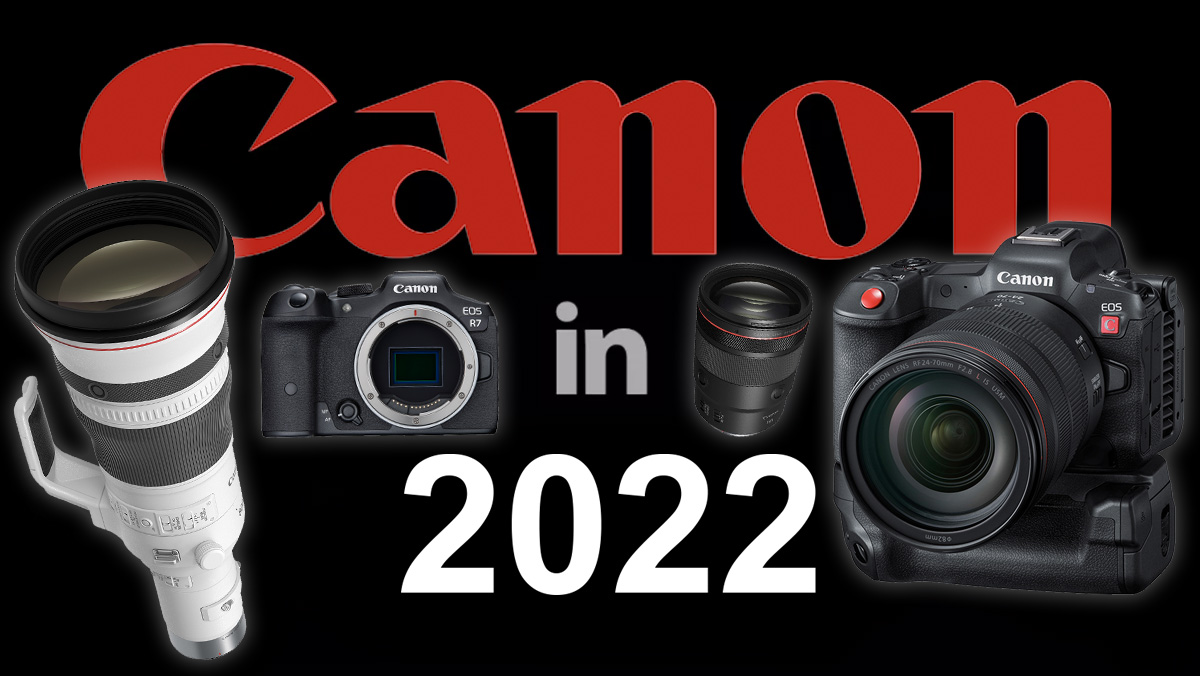
2022 has been a year Canon faced silicone chip shortages, stock issues, a rising cost of living and a looming global recession. Despite its challenges, Canon had a knockout year, maintaining its title as the largest manufacturer of digital cameras in the world with 48% global market share, compared to the next highest, Sony at 22.1% and Nikon at 13.7%.
Last year we saw Canon drop incredible head-turning cameras like the EOS R3 and super-specialist lenses like the £13,409 Canon RF 600mm f/4L IS USM. This year was just as eventful, as Canon released four new mirrorless EOS R-series cameras, with Canon breathing new life into its neglected APS-C format, bringing out the EOS R7 and EOS R10.
At the end of 2021 Canon CEO, President and Chairman Fujio Mitarai, confirmed the EOS-1D X Mark III would be the company’s last flagship DSLR – all but cementing the company's future as a mirrorless one. So it’s no surprise that in 2022 Canon continued to expand its EOS R range of the best Canon cameras, as well as broadening its selection of the best Canon RF lenses. Here's how the year panned out…
January – Canon releases the EOS R5C
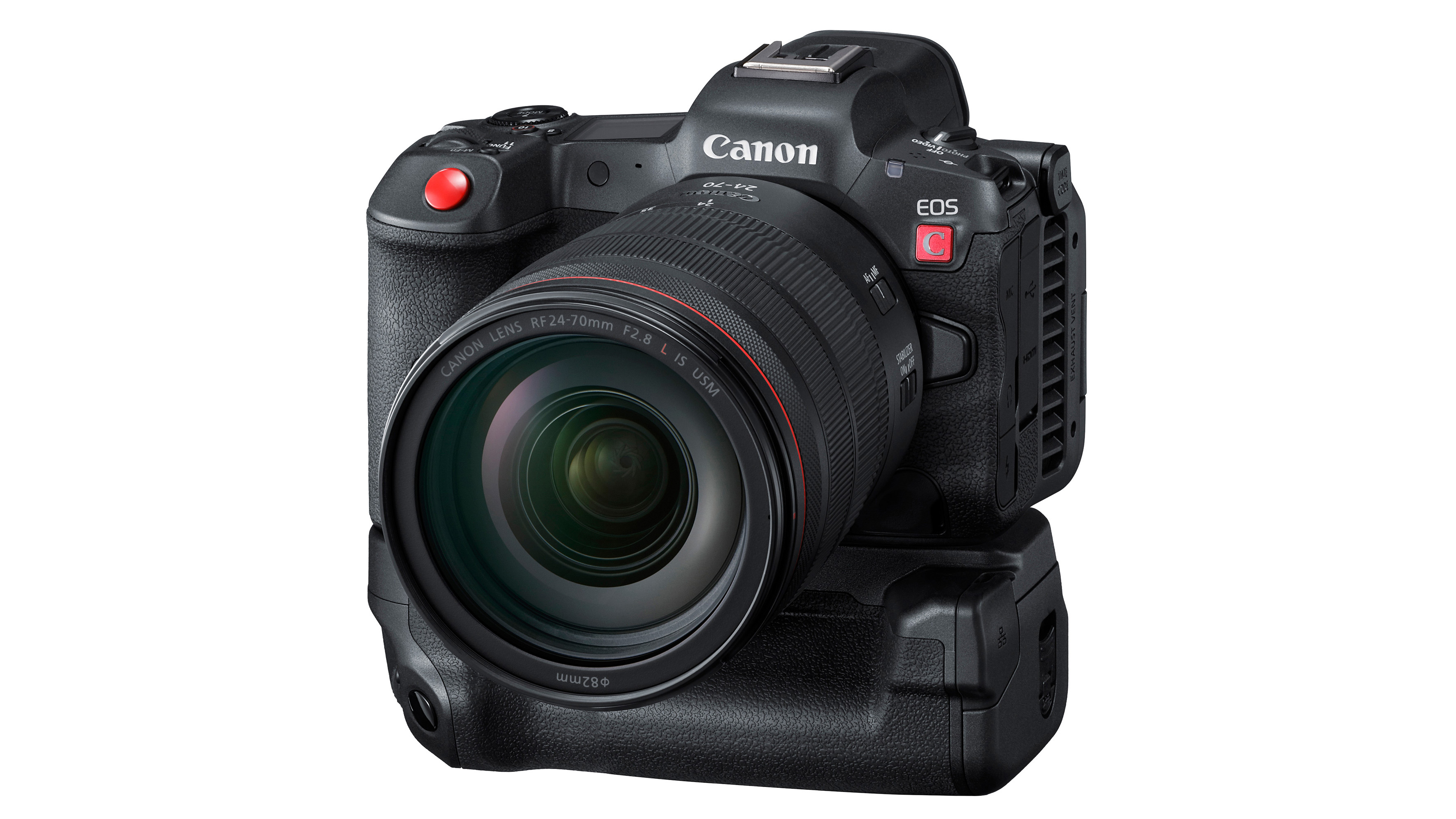
We didn’t have to wait long before Canon made its first product announcement. On January 19 we got the news of the Canon EOS R5C, an alteration of its mirrorless full-frame EOS R5, with some substantial tweaks made to enhance its video capabilities and make it a great camera for video.
The EOS R5C looks physically similar to the EOS R5, apart from the protruding active fan at the rear which helps keep the sensor and DIGIC X processor cool. Inside, the EOS R5C uses the same 45MP full-frame sensor and RF mount, though omits the R5’s in-body image stabilization, however, lens stabilization can be used alongside digital stabilization at the cost of a slight crop. Like the EOS R5, the new version shoots 45MP stills at a blistering 20fps.
• Canon EOS R5 vs R5C – What are the differences?
While the original EOS R5 shoots cinematic 8K raw video in 12-bit internally, it is limited to 30p and has a time limit. However, the cinematic EOS R5C uses a fan for active cooling, to mitigate overheating issues, which means the new model can record without a cap when shooting 8K footage at 60p, or 4K slow-motion at 120p. It can also record 8K at 60p internally using Cinema Raw Light, a 12-bit raw video format. The Canon EOS R5C was later released in March with an RRP of $4499.
Get the Digital Camera World Newsletter
The best camera deals, reviews, product advice, and unmissable photography news, direct to your inbox!
February – Two super telephoto primes
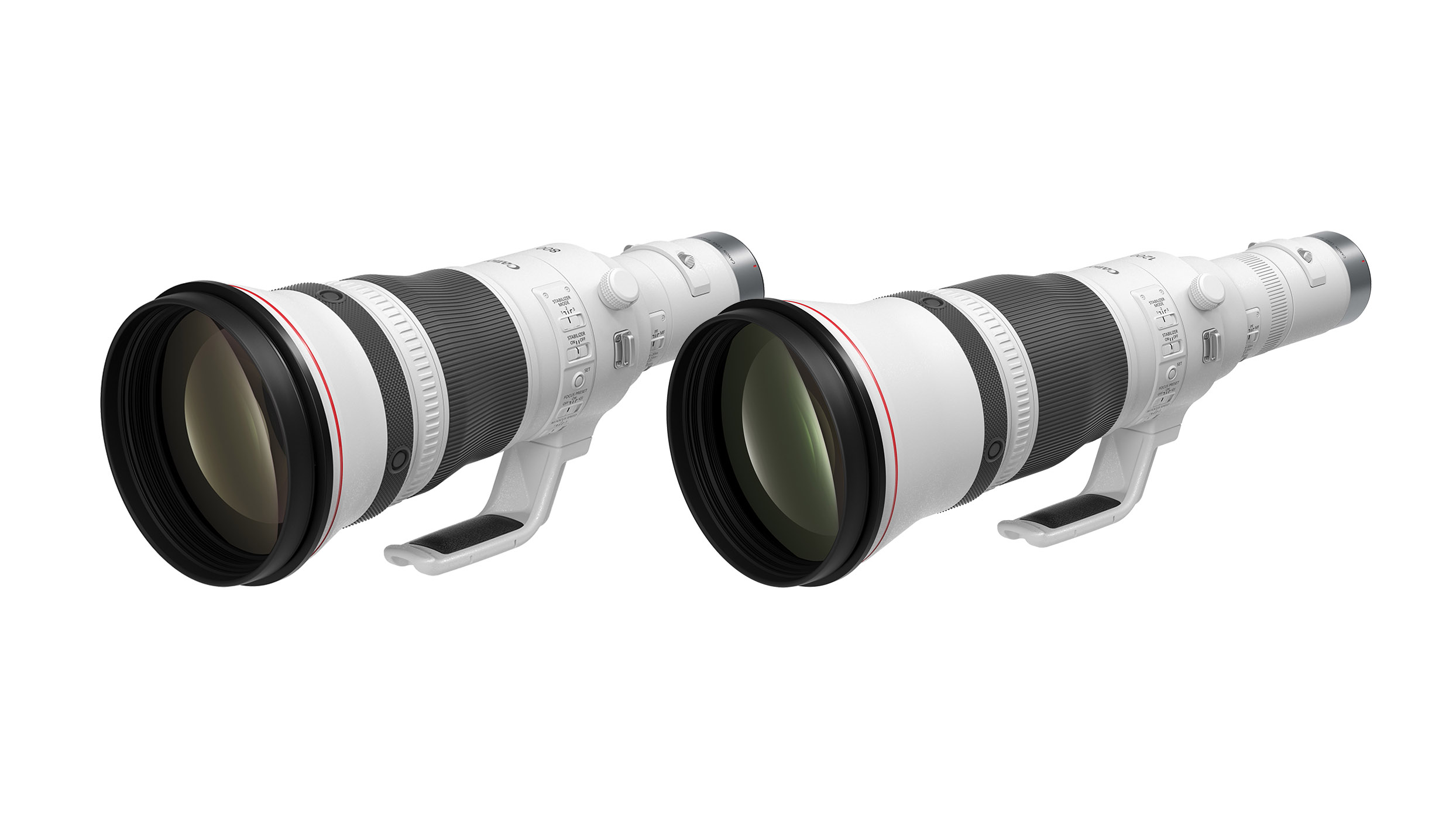
Canon marked its 35-year anniversary of Canon EOS systems by releasing two mammoth super telephoto lenses on February 24, the Canon RF 800mm F5.6L IS USM and Canon RF 1200m F8L IS USM.
Canon’s RF 1200m F8L IS USM costs a whopping $20k, and while the RF 800mm F5.6L IS USM costs a little less, it’s still going to leave a sizeable dent in your wallet at $17k, making these two optics some of the most expensive in Canon’s range. Both models feature weather-sealing, a 9-bladed aperture for smooth bokeh and a fluorine coating on the front element.
• These are the best Canon telephoto lenses
The Canon RF 1200m F8L IS USM breaks the record as the longest focal length for full-frame consumer cameras, features an f/8 maximum aperture, ring-type USM AF system for fast and near-silent autofocusing, as well as 4-stops of optical Image Stabilisation which can be paired with the IBIS of the latest EOS R cameras for enhanced stabilization. Despite being quite a large lens, it’s impressively light, weighing 3.4 kg, so can even be used handheld.
The RF 800mm F5.6L IS USM is one of Canon’s longest focal length lenses ever produced and pushes the boundaries of the RF lens range. It’s an incredible lens for far away subjects such as wildlife, allowing you to get closer, frame-filling shots of distant animals with its long 800mm fixed focal length and offers 4.5 stops of optical image stabilization, which again can be enhanced with an IBIS body like the EOS R5.
May – Canon EOS R10 and EOS R7
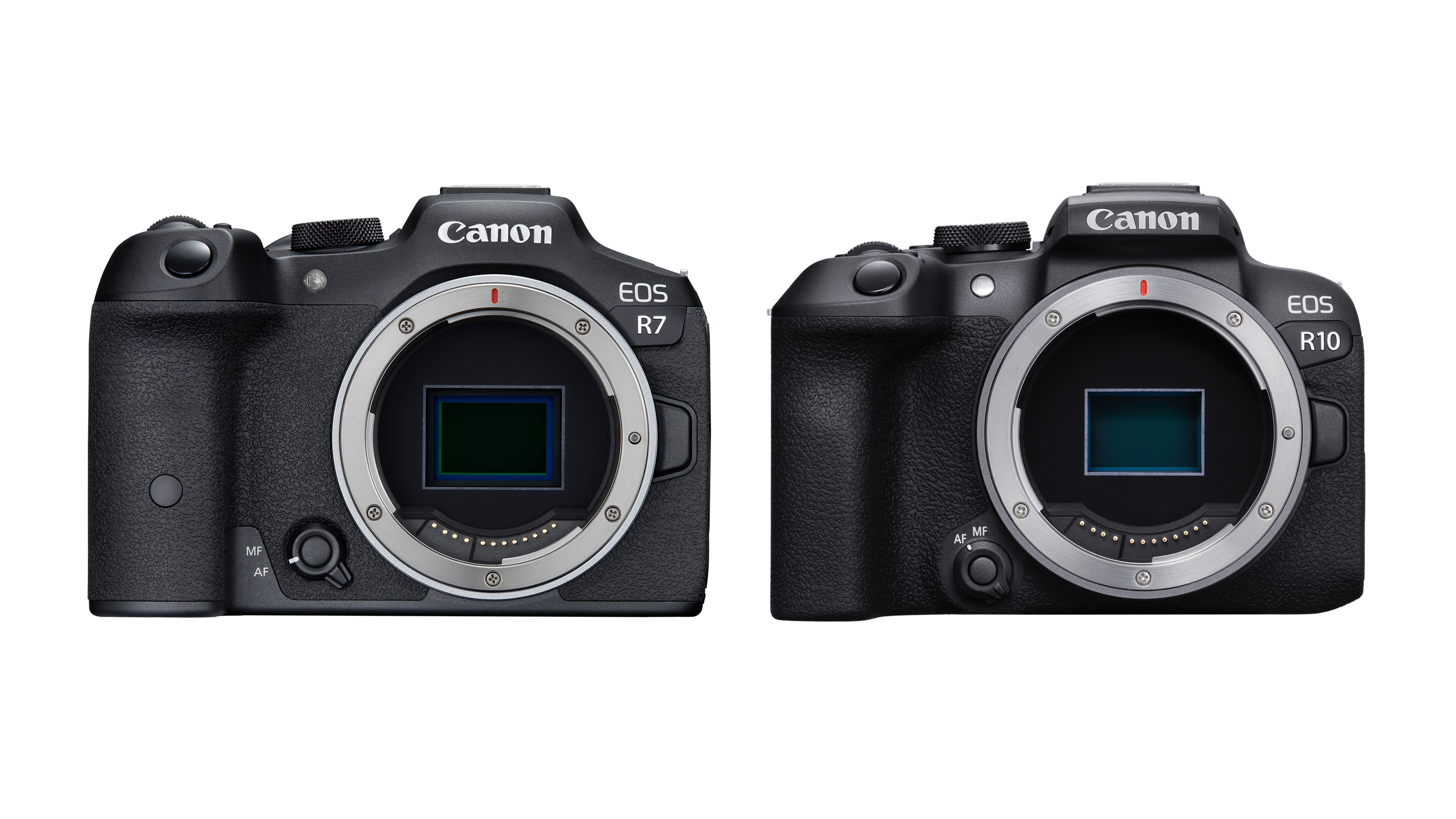
While it would seem Canon has prioritized its full-frame mirrorless cameras in recent years, with the likes of the EOS R, EOS RP, EOS R3, EOS R5, EOS R6 and latest EOS R6 Mark II, things have been quiet on the smaller APS-C sensor front. But that all changed in May when Canon launched not one but two APS-C mirrorless cameras that sit in the EOS R range, making a clear break from its already established mirrorless APS-C EOS M line-up.
The two new cameras were the Canon EOS R7 and the more budget-friendly Canon EOS R10. The EOS R7 features a 32.5MP APS-C sensor and a brand-new Canon RF-S mount that works with a new range of mirrorless APS-C lenses, as well as the existing full-frame RF lenses, albeit with a 1.6x crop. It also features Dual Pixel AF and in-body Image Stabilisation (IBIS) as well as 15fps shooting with the mechanical shutter or up to 30fps with the electronic shutter, as well as 4K video capabilities.
The more budget-level EOS R10 also features a cropped 1.6x APS-C sensor in a compact mirrorless body but has a 23% lower resolution at 24MP. It too, can shoot at a blistering 15fps and has a very similar autofocus system based on algorithms found in the pro-level EOS R3 for animal, people and vehicle tracking.
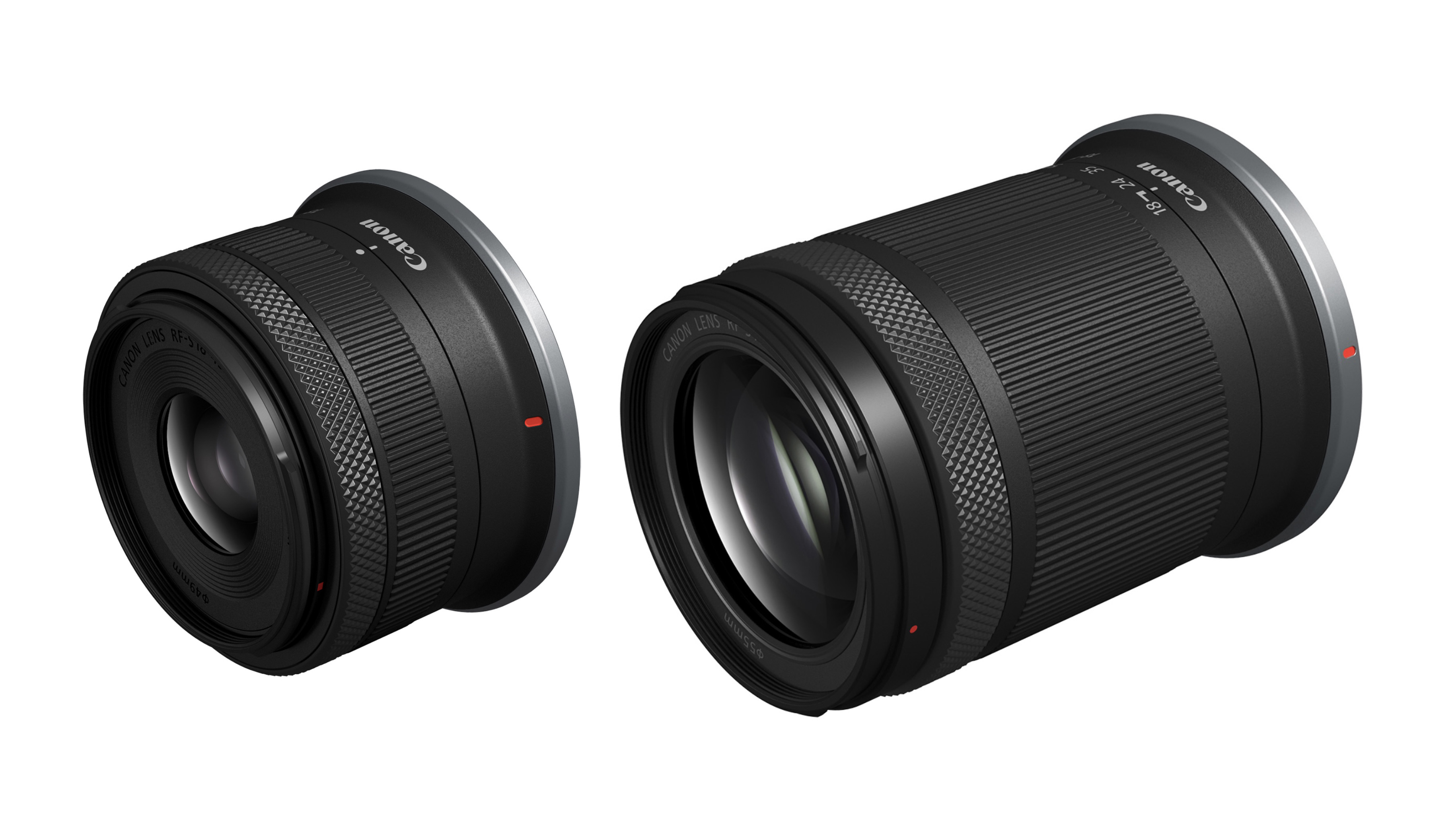
Launched in tandem with the EOS R7 and EOS R10 were the first new lenses to use the RF-S mount, a Canon RF-S 18-45mm F4.5-6.3 IS STM and RF-S 18-150mm F3.5-6.3 IS STM.
July – Canon releases two RF wide-angle lenses
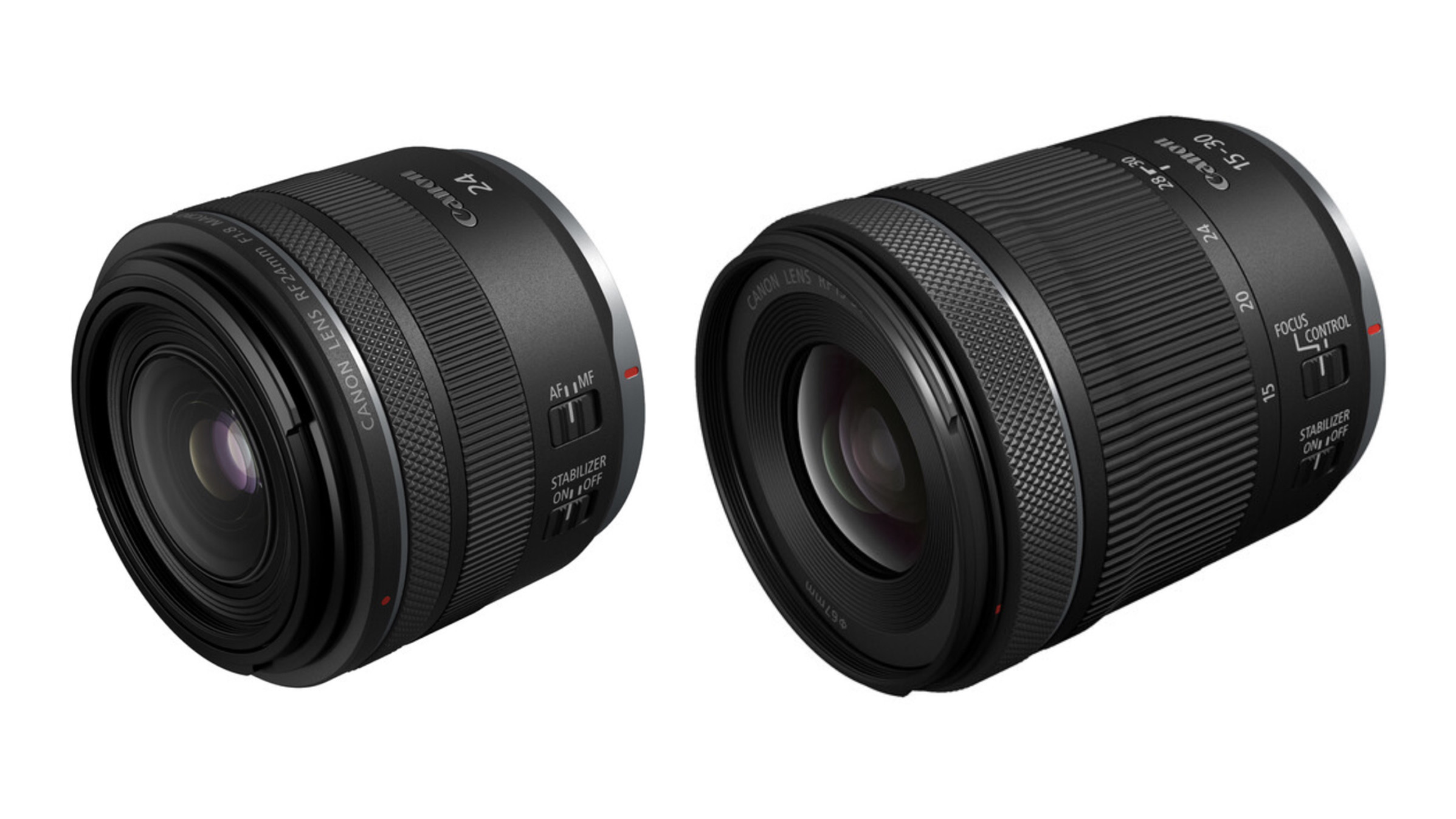
In July Canon announced two new wide-angle lenses boasting image stabilization, the Canon RF 24mm F1.8 Macro IS STM and the Canon RF 15-30mm F4.5-6.3 IS STM. Both feature optical stabilization that becomes even more enhanced when paired with an EOS R series camera that features in-body Image Stabilisation (IBIS). They also feature a stepping motor (STM) for smooth and quiet autofocusing.
The Canon RF 24mm F1.8 Macro IS STM is constructed from 11 elements in nine groups and features an ultra-low dispersion and an aspherical element. It has a filter thread of 58mm and a 14cm minimum focus distance for macro shots at 0.5x magnification.
Canon’s RF 15-30mm F4.5-6.3 IS STM is a wide-angle zoom lens that goes from 15mm ultra-wide to a standard 30mm wide angle. The lens is constructed from 13 elements in 11 groups and includes one aspherical element as well as two Ultra Low Dispersion (UD) elements. It also has a seven-bladed aperture as well as a Super Spectra lens coating.
November – Canon EOS R6 II, RF 135mm prime and EL-5

Canon’s last hurrah of the year was to drop three new products in November, a Canon RF 135mm F1.8L IS USM lens, Canon EOS R6 II and Canon EL-5 flash.
The Canon RF 135mm F1.8L IS USM lens is the long-awaited update to the Canon EF 135mm f/2L USM which has a short telephoto focal length ideal for tight portraits, or when you need a greater working distance, such as for candid shots at a wedding. The new version is Canon’s first 135mm lens in 26 years and is unsurprisingly native to the RF mount. This means you no longer have to use the EF-EOS R adapter to use your 135mm lens, and it gets quality-of-life improvements in the form of a slightly wider maximum f/1.8 aperture, image stabilization, control ring and the latest glass technology.
The Canon EOS R6 II is an update to the EOS R6 which was only released back in July 2020. The new model features a 40fps burst mode, can record 6K-oversampled video to the brand-new 24.2MP sensor as well as the ability to pre-record both stills and video so you don't miss a microsecond of the action, which makes it the most fully loaded mid-range camera on the market.
The Canon EL-5 is the only flashgun the company launched in 2022, and has a 60GN output, built-in modeling light, rechargeable battery pack and makes use of a new Multi-Function foot, making it the first flash to be 100% compatible with the multi-function shoe found on cameras such as the Canon EOS R3, Canon EOS R7 and Canon EOS R10.
The new shoe enables a new generation of Canon accessories, such as flashguns and microphones, to be mounted without the need for cables. In some cases, accessories can also draw power from the attached camera's battery instead of needing its own power source.

Deputy Editor on PhotoPlus: The Canon Magazine, Dan also brings his technical wizardry and editing skills to Digital Camera World. He has been writing about all aspects of photography for over 10 years, having previously served as technical writer and technical editor for Practical Photography magazine, as well as Photoshop editor on Digital Photo.
Dan is an Adobe-certified Photoshop guru, making him officially a beast at post-processing – so he’s the perfect person to share tips and tricks both in-camera and in post. Able to shoot all genres, Dan provides news, techniques and tutorials on everything from portraits and landscapes to macro and wildlife, helping photographers get the most out of their cameras, lenses, filters, lighting, tripods, and, of course, editing software.
- Lauren ScottFreelance contributor/former Managing Editor
